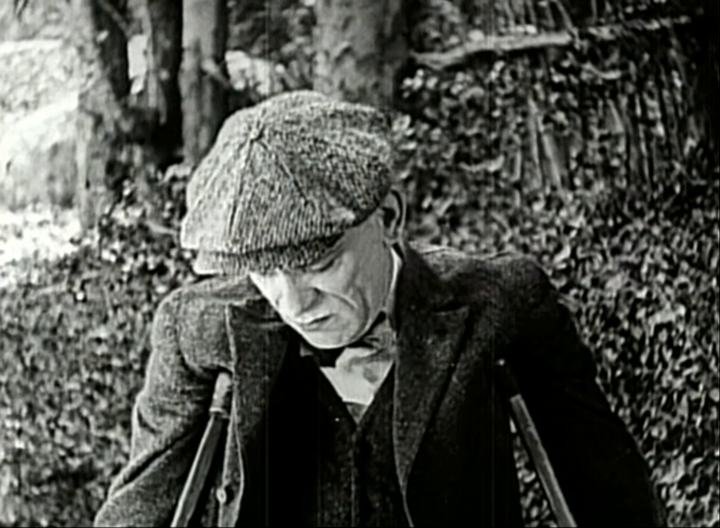

A helpful instruction re the consumption of Chinese food from the start of THE SHOCK, a one-hundred-year-old crime melodrama starring Lon Chaney.
It is October. Proper Autumn, when the leaves of the soul yellow and crinkle. What better way to welcome the springtime of death than with Lon, Sr, doing what he does best — feigning disability and not getting the girl?
Chaney’s is the cinema of novelty, even if he does repeat himself in the fundamentals mentioned above. So we immediately get that rarity, a semaphore intertitle, tapped out by a Chinese-American confrere’s thumbnail —


Lon replied by Chopstick Telegraphy —


The thumb’s owner is played by Japanese actor-director Tôgô Yamamoto. No “yellowface” in this film.
A Chinatown crime queenpin sends Chaney to a small town to await instructions. While there he falls under the influence of the pastoral setting and a Pollyanna-ish local girl whose intertitles consist entirely of CAT POSTER TEXT.


To drive home the point, the first thing we see in this new location is a kitten clawing at Lon’s disabled ankle, and him smiling at it and NOT kicking it into the bushes. So we know he’s Changed.
If you happen to have watched THE SIGNAL POST on Silent Movie Day you’ll recognise Virginia Valli as Lon’s leading lady.
Catching Valli in a clinch with another guy breaks Lon’s heart in a close-up that’s held for twenty seconds to allow him to show the multiple stages of cardiac fracture.




There don’t seem to be many twenty-second close-ups in modern cinema. BIRTH featured a long take focussing on Nicole Kidman’s face, and this received much comment — it was perceived as ballsy, an unspoken undercurrent of meaning being that when your star is basically a hollow outline packed with botox, dedicating long seconds to her physiognomy takes courage. But Kidman is a great actor in the right role, and minimal movements do her very well.
Of course there’s always SON OF SAUL, which stays close to its central face throughout, which is even braver.
Lambert Hillyer isn’t that much of a director — he’s never heard of camera movement and he shoots every scene starting with a wide established, then going into a closeup, then singles. Not much more to it. But I give him a few points for giving Chaney time to emote. I’ll deduct a few for his failure to repeat the trick when Chaney realises he’s blown up the woman he loves with gelignite. We all know Chaney would have aced that reaction shot.


Deus ex machina — the plot having got fankled beyond all retrieval, Chaney prays for a miracle. If you have ever wondered what a Lon Chaney Miracle would look like, THE SHOCK supplies the answer: the San Francisco earthquake arrives to save the day, the seismological cavalry. The surprise is slightly spoiled by the poster, showing a giant Chaney emoting over a landscape of rubble, and by the film showing us a model shot before anything has happened. A kind of miniature foreshadowing, i guess. Every film set in Frisco should climax this way, regardless of when the action takes place. DIRTY HARRY, MRS DOUBTFIRE, MILK. Even VERTIGO would get a welcome fillip, the earth opening to receive the plummeting Novak.
The resulting rumble, in which everything caves in, falls over, explodes, and catches fire, may not be as spectacular as the civic irruptions of IN OLD SAN FRANCISCO or SAN FRANCISCO or SAN ANDREAS but I enjoyed it very much.

“This is fine.”
The real shock of THE SHOCK is what happens afterwards — I shan’t spoil it. All I’ll say is, in preparation for it, Lon suddenly changes his shade of lipstick.






























